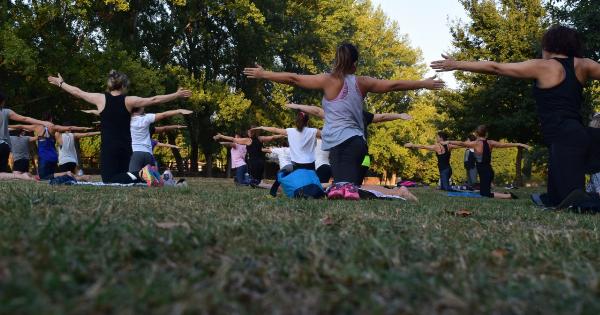Exercising is an essential part of maintaining a healthy lifestyle. It not only helps in weight management but also improves cardiovascular health, boosts mood, and reduces the risk of chronic diseases.
While some individuals prefer to exercise in the morning, recent studies show that working out in the afternoon can be more beneficial and yield better results. In this article, we will explore the reasons behind the afternoon effect and why exercising later in the day can lead to optimal outcomes.
The Science behind the Afternoon Effect
Our body’s internal clock, known as the circadian rhythm, plays a crucial role in regulating various physiological processes, including metabolism and hormone production.
This internal clock follows a 24-hour cycle, influenced by environmental factors and our lifestyles.
One significant factor affecting our circadian rhythm is the production of cortisol, a hormone released by our adrenal glands.
Cortisol levels follow a specific pattern throughout the day, peaking shortly after waking up and gradually declining as the day progresses. Exercise has the potential to impact cortisol levels and, therefore, the effectiveness of our workouts.
Optimal Cortisol Levels
Working out during the afternoon takes advantage of the natural decrease in cortisol levels that occur in the late afternoon and early evening. Cortisol plays a vital role in fat metabolism and muscle breakdown.
High cortisol levels can hinder muscle growth and impede the body’s ability to burn fat efficiently.
Exercising during the afternoon when cortisol levels are naturally lower helps to maintain a healthy balance, enabling the body to utilize energy more effectively and promote muscle growth.
This optimal cortisol level during the afternoon allows for better muscle synthesis, repair, and recovery.
Increased Muscle Strength and Endurance
Research suggests that muscle strength and endurance tend to be at their peak in the late afternoon and early evening. Several factors contribute to this phenomenon:.
Body Temperature: Our core body temperature increases throughout the day, reaching its peak in the late afternoon. The rise in temperature is associated with improved muscle function, flexibility, and reduced risk of injury.
Joint Lubrication: Synovial fluid present in our joints thickens during sleep, making morning workouts less comfortable.
As the day progresses, joint lubrication improves, allowing for better flexibility and range of motion during afternoon exercise sessions.
Hormonal Influence: Testosterone, a hormone responsible for muscle growth and strength, is naturally higher in the late afternoon.
Increased testosterone levels during this time can enhance muscle strength and overall athletic performance.
Improved Mental Focus and Alertness
Exercising later in the day also offers benefits for mental focus and alertness. Our brain’s cognitive function tends to be at its peak during the afternoon due to increased blood flow and oxygen supply.
By choosing to exercise in the afternoon, we can harness this improved cognitive function and apply it to our workouts.
Enhanced mental focus can result in better coordination, technique, and regulated breathing, leading to more effective and efficient workouts.
Enhanced Sports Performance
For individuals involved in competitive sports or athletic endeavors, exercising in the afternoon may provide a strategic advantage.
Multiple studies have shown that our body’s performance, including strength, speed, and endurance, reaches its peak in the late afternoon.
Training at the same time as anticipated competition can help the body adapt and perform optimally during important events.
By aligning training schedules with the body’s natural peak performance time, athletes can maximize their potential and improve their chances of success.
Maintaining Consistency and Habit Formation
Another reason to consider afternoon exercise is for consistency and habit formation. While mornings can be hectic and evenings often filled with commitments and fatigue, afternoons can offer a more predictable schedule for many individuals.
Establishing a consistent exercise routine is vital to long-term success. By choosing the afternoon as your dedicated workout time, you are more likely to stick to your fitness goals, leading to improved overall health and wellbeing.
Listening to Individual Preferences
It’s important to remember that optimal workout timings can vary between individuals.
Some people find that exercising in the morning provides them with energy for the rest of the day, while others feel more invigorated and focused in the afternoon or evening.
The key is to listen to your body and choose a time that works best for you. Experiment with different workout timings to determine when you feel at your best, both physically and mentally.
Ultimately, the most effective time to exercise is the time that allows you to be consistent and enjoy the process.
Conclusion
While there is no one-size-fits-all answer to the best time for exercise, the afternoon effect provides strong evidence that working out later in the day can yield better results.
Taking advantage of our body’s natural circadian rhythm, optimal cortisol levels, increased muscle strength and endurance, improved mental focus, and enhanced sports performance can all contribute to achieving fitness goals.
By selecting the afternoon as your preferred workout time, you can harness these benefits and establish a consistent exercise routine, ultimately leading to improved overall health and wellness.



























